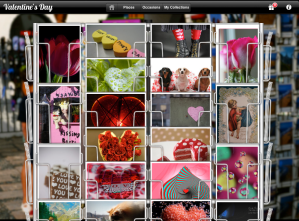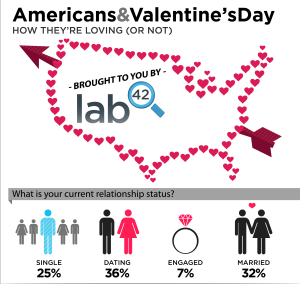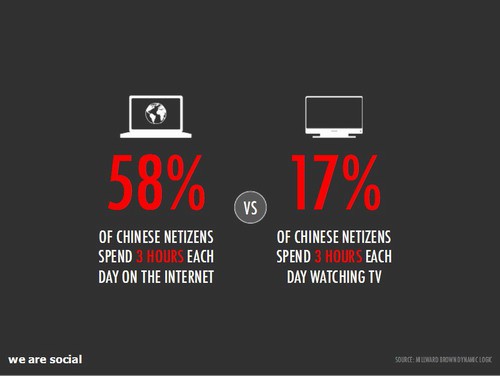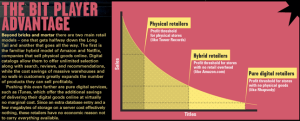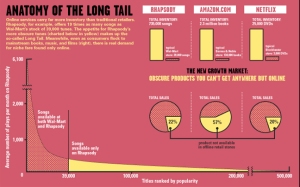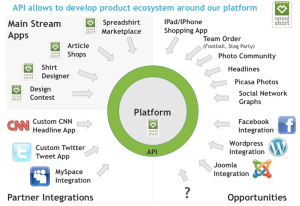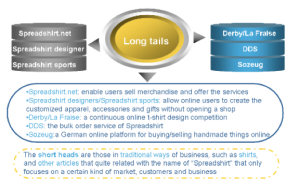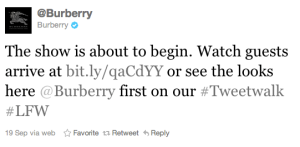Valentine’s Day, Generation Z style!
The day of love is finally here! Or shall I say, the day of commercialised love is finally here! As an upcoming marketer I cannot ignore the importance of this day! And as a “Generation Z” marketer I have to look into the future of the “Valentine Fever”.
Due to today’s demanding and hectic lifestyles people don’t have time to go to a store and buy a cute standardised card, a bouquet of flowers and a symbolic little gift for their loved ones. Therefore, technology comes to the rescue, once again!
For example, Cards can now be customised with your own pictures and personalised message to fit your unique identity, purpose and “inside jokes”. Popular websites such as moonpig.com can accomplish this.
A more convenient option is offered by smartphone and tablet applications. Two very successful applications are “Cards” for the iPhone and “Lifelike Cards” on the iPad. The tailored-made cards are then printed and sent by mail to your loved one/s anywhere in the word. If the recipient is already in your contact list, the address is even automatically inserted.
Convenience is therefore the key to attracting this new generation of tech-savvy consumers, a segment that increasingly dominates the main market.
But creativity may be even more effective. Therefore, my personal favourite initiative was introduced by Victoria Secret. Mine and 293 235 other people’s who embraced the “gorgeous valentine”.
Personalised gifts are also extremely common, therefore SEO is an appropriate strategy successfully demonstrated by gonedigging.co.uk.
Digital corporations like techlicious.com who created “Sexy apps”, have also capitalised on this celebration.
Another appreciated digital strategy was employed by the Four Seasons Hotels and Resorts who taps into the Valentine’s Day craze through a fan-curated giveaway application on its corporate Facebook page, a themed digital magazine article and hotel experiences. For the sake of romance, a lucky couple will win a memorable experience and the enterprise is able to create buzz, interaction and achieve diversification by associating itself to different occasions.
Heineken also launched “The Serenade”, a facebook app designed to help you ask people out on a date this Valentines Day, via a personalised “Serenade” video, available in 20 different languages. After selecting your special someone, why you like them, a plan for Valentine’s day and why you are so special, Heineken will turn that into a musical serenade and post it to your potential dates wall, where they can watch the video and say yes or no to your proposition!
The campaign then develops this into an 8 hour live streaming YouTube event, where fans are asked to go on a legendary date and surprise their loved one in with their serenade written and performed in real-time.
Last but not least, an impressive and highly engaging digital and online competition was introduced by Samsung Electronics UK where people have the opportunity to see their love story in lights on the Samsung screen at Piccadilly Circus. Until the 13th of February fans were encouraged to share their love stories on Facebook and the best story will be seen as a special feature animation on the big screen on 14th February. The couple will also win a pair of Samsung Galaxy Note handsets and a dream date in London, complete with a chauffeur-driven car, a champagne dinner and a luxurious hotel room.
Demographic data are also collected through various social media. This is an infographic built using data from 400 Facebook and MySpace users that might give you insight into love in America, circa 2011.
HAPPY VALENTINE’S DAY!!!
The good, the bad and the really, really confusing
Yes it is that time of the year again. It is the show stopping, jar dropping and eagerly anticipated time of the multi-million ad’s season (oh yeah, and the Super Bowl- but who cares!). Yesterday evening at 6:30 PM Eastern Time, the 46th Super Bowl began with a collision of the New York Giants and the New England Patriots in Indianapolis. For those don’t care much for football, the precious 5 minute time slots between the game are the moments to start watching your tv screen. Yes it is true the ad’s are the focus before the game, during the broadcast and for several days after the winning team has lifted the trophy.
No ad’s are more anticipated than the million dollar slots in between the games and this is why for many companies the Super Bowl is the best time to make some heavy investments to run their ad’s during these prime time slots.
To come to the point – here’s Generzation Z’s view of this year’s winners, losers and those that simply left us confused. As far as the most popular ad’s are concerned, advertisers betted high on sex appeal and animals. And yet, it seems that the car commercials were the crowd’s favourite.
Let’s address the winners of this years Super Bowl first.
6. Doritos “Man’s best friend”
Strangely weird, bordering on distressing and yet funny. What some men do for their Doritos.
5. M&M “Just my shell”
This one was a close one as the Doritos ad was good as well. But who can not cave in when red M dances naked to “sexy and you know it”? Candy nudity – hilarious.
4. Budweiser “Rescue Dog”
Just three (or four) simple words for this one: funny, adorable and soooo cute.
3. Kia “A Dream car for real life”
An ultra manly car in an ultra manly dream that includes larger than life sandwiches, Chuck Lindell, Motley Crue and Adriana Lima. It is a little insane – but definitely in a good way.
2. Chrylser “Halftime in America”
Definitely the crowds favourite with the most Facebook likes and 29% of positive Twitter feeds. Clint Eastwood addressing a comeback for Detroit in his gravel voice monologue. A definite surprise of the evening – and yet an epic memory.
1. Honda “Matthew’s Day off”
Yes. Yes. Yes. Nostalgic to perfection, funny and simply clever. Go Ferris- a classic!
And now to the spots that left us, and a couple of million viewers, simply speechless (and not in the good way!)
5. The New England Patriots who lost miserably!
4. Go Daddy “The Cloud”
Sex: yes! Go Daddy & Sex: repugnant! It seems that sex does not sell everything after all.
3. Audi “Vampire Party”
Vampires? Seriously? After we were just so relieved that Twilight finally ended Audio brings a Vampire comeback. The bottom line is: target audience completely missed unless someone convinces us that 13 year old girls buy $50,000 cars!
2. Pepsi “Fit for a King”
Elton John, X Factor winner Melanie Amaro (WHO?) and Flava Flav (WHY?). There is really not much to say besides- “how in the world could this be a good combination?” and “maybe it would have worked if Elton portrayed a Queen?”.
1. Coca Cola “Catch”
Coke brings back the Polar bear and we wonder why? Coke – one of the top firms with countless amazing advertisements chooses to air such a lame one. Sorry Coke, but you can do so much better than this!
Games imply something?
I am pretty young but I have the feeling that my age group is the end of the generation, which got together with friends at one’s house to play games. From playing cards to board games like Scrabble and Monopoly, gaming used to be our way to socially interact and have pleasant time. But now, young generation can stay ‘social’ with clicks! Furthermore, they don’t need friends to play games, even board games. Thanks to smart devices and the Internet, an era is closed…
Things don’t stay still. They change, evolve or vanish. But I wonder how a virtual communication can replace face-to-face interaction, at all times. It is usual for people to buy things online or chat with sales people and ask product related questions. Life is so demanding and there isn’t enough time for many things, so these kinds of opportunities are life saving in some point. But doing everything via Internet, this doesn’t sound acceptable to me but unfortunately; it doesn’t also change the fact that it is the current phenomenon.
The new study of the University of Chicago Booth School of Business revealed that the impulse of checking a social network like Twitter or Facebook is stronger than the desire to smoke or drink alcohol. It is not that surprising since a cigarette box costs around 5 pounds, which equals to a monthly smartphone Internet package. Technology enables us to carry our social network in our pockets and it is competitively priced. Why not to hang on Facebook and play games when you get bored?
According to bbc.com (Gardens of Time beats Cityville in Facebook games list), the top three games on Facebook are Gardens of Time, The Sims Social and Cityville. Apparently, they all are some kind of simulation of life. There used to be board, war or cartoon games. Poker was very popular few years ago but not this one. I think the question that we have to ask ourselves is why people are so interested in such simulations though they’re living in the real one. What is the motivation behind it?
The Telegraph revives the same question over “The Second Life”. Dr. James Cruickshank asks on his article that if people don’t play to win, why they play. According to his point of view, it is an interactive step out from the real world. TV may also help people to escape from their issues for a while but doesn’t let them to contribute and feel themselves effective.
This new trend in gaming actually constitutes an opportunity for marketers. Marketing is all about creating value and if customers value such games, being a part of it will contribute to brand equity. Brands should be part of both real and virtual world. Piece in mind means a piece in wallet, at the end!
Tesco’s multi-channel to succes
 Gone are the ‘old’ days when customers needed to walk to a supermarket to do their shopping and here’s to the new era where shopping on-the-go is a must. In this changing environment one supermarket giant has successfully managed to dominate- Tesco. Their multi-format concept to differentiating its presence was the first approach Tesco employed to find a new positioning strategy.
Gone are the ‘old’ days when customers needed to walk to a supermarket to do their shopping and here’s to the new era where shopping on-the-go is a must. In this changing environment one supermarket giant has successfully managed to dominate- Tesco. Their multi-format concept to differentiating its presence was the first approach Tesco employed to find a new positioning strategy.
In the 1990s came their diversification strategy into a bricks-and-clicks model through their ‘Tesco.com’ website. While in the early stages customers were still able to place orders via multiple devices, Tesco soon decided to streamline and improve their ordering process strictly via the web. To complement this they made use of the in-store picking model- as the dense network of supermarkets all over the country allowed for a smoother delivery and giving customers the opportunity to shop from their local Tesco online. This model also presented customers with a more natural extension of the bricks-and-mortar experience. The final shift Tesco underwent came with the introduction of Tesco Access in 2001. Through this new system, Tesco allowed customers to freely shop at any time and any place.
In 2006, Tesco launched their first home shopping catalogue as an extension channel to their non-food ranges. They integrated this operation with their online channel, and branded both as ‘Tesco Direct’.
Nowadays Tesco is diversifying, keeping a close eye on their multichannel approach to expand into new services and countries. CEO of Tesco.com Laura Wade-Grey notes:
“At Tesco we have a multi-channel approach so that people can shop how they want to, be that at home, in store, through their mobile, from the Tesco Direct catalogue. We have different shop formats to suit customer needs. Some like to drive to a bigger store, others like to shop for their fresh food on their local high street, and some find it easier to shop online and order their shopping straight to their door.“
Up to this day, the retail giant has remained one of the most successful multichannel retailers with online sales climbing steadily. In their annual report 2010, Tesco reported that their profits role by 10.1% to £3.4bn, with online sales climbing to £136m. By the end of 2011, online sales recorded a further 15% increase with double-digit growth in grocery and a further 30% increase at Tesco Direct.
Tesco’s multichannel approach seems to be their formula of success and thus the firm serves as the prime example to demonstrate how successful retailers can operate if their online and offline service are integrated to complement each other. Indeed, Tesco’s formula to success seems to be the way to the future. A recent report from Deloitte notes that the future of shopping lies in the digital world and the opportunities it provides for its customers.
According to Deloitte, multichannel shoppers spend 82% (on average £116 ) more in each transaction compared to those who only buy in-store. Deloitte claims that the modern multi-channel consumer is well-informed about the products they buy online, resulting in a higher value and volume of purchases. At the same time, multi-channel retail also presents a huge opportunity to retailers as it allows to empower their consumers. Ian Geddes, UK head of retail at Deloitte, says that “consumers are more willing than ever to shift loyalties and can be in one retailer’s store researching a product whilst using their smart phone to find the cheapest price on a rival’s website.” He also adds that there are numerous examples of UK retailers, such as Tesco, who are doing well using the multichannel model. There are already examples of UK retailers doing well in multichannel but the overriding feeling is that there are many more opportunities to grow. “As the UK retail industry faces a period of weaker demand and slower growth, multichannel is an area where retailers have genuine opportunity to grow. Operating across multiple channels is no longer something for the wish list, it is the cost of doing business.”
Digital Era of Luxury Brands
The days when luxury brands did not see much benefit in going digital have passed and today many of them have started to embrace the internet. According to the Luxury Lab 2009 report by Scott Galloway and Nyu Stern, a number of luxury brands that have been ranked highest by digital IQ score, including Apple, BMW, Louis Vuitton, Ralph Lauren etc., have been very successful in the digital marketing strategies and have extremely profited from providing online experiences and shopping opportunities to their customers. Many other “brick and mortar” luxury brands are currently expanding their online presence because they realise that while they may have managed to prosper in the times of recession, they will not be able to grow in the future unless they go digital. Early in January 2012 Boston Consulting Group supported this idea by stating that “by 2016, there will be 3 billion Internet users globally, and the Internet economy will reach $4.2 trillion in the G-20 nations”, therefore implying that the future for businesses rests in the digital economy.
However, while Burberry is announcing Digital Fashion Shows for its fans and Dolce-Gabbana is live-streaming the audience and the offstage rehearsals and preparations, some luxury brands are still not convinced about the benefits that the digital era brings to the business. They believe that digitalisation will hurt brand image and will make ensuring of messaging consistency more difficult. They also look at the online failures of some hugely successful brands (e.g. J’aime mon carre website launched by Hermes) and become pessimistic about making their own strategy work in the online world. But, despite the risks associated with operating in digital economy, it is worth giving it your best shot, failing and starting over, than doing nothing and watching competitors grow.
Interestingly, there are luxury brands that choose to utilize digital tools but do not have sufficient digital marketing strategy to increase awareness and customer satisfaction from the brand being available digitally. Jenn-Air, known for its luxury appliance manufacturing, is one such brand. According to Luxury Daily (online news) website, the firm has recently introduced a new mobile site with augmented reality iPhone application aimed at allowing customers envisage branded furniture and other appliances in their homes. The application targets affluent consumers and has a simple design that specifically caters to the needs of busy iPhone and iPad users who want quick access to the desired information. Nonetheless, the company has not used any press releases to announce the launch of the application, which is even more difficult to find considering the specific name of the app, “DesignVision”. Therefore, better marketing of company’s digital presence would have been highly beneficial for the company.
Digital economy enormously changes the industry structure and ways in which companies operate. Profitability does not come from simple expansion into digital space. Only companies that know how to utilize digital tools available at hand well, can create sources of advantage by going digital.
Long-tail: the efficiency of abundance
The concept of the long-tail was first coined by Chris Anderson in early 2004. His idea took notion of the Pareto Principle and the 80/20 rule – namely that small numbers can have a large impact. He observed that new efficiencies in distribution (especially via the Internet) has brought about critical changes in consumer choice. This choice has allowed for the creation of niche markets that would otherwise not exist. Serving those niches can provide businesses with new and profitable opportunities. Anderson proposed that the long-tail promises long-term effects in terms of economics, culture and more. Anderson himself offered a variety of definitions of what the long-tail concept is really about. In the simpler way, Anderson describes the long-tail in terms of:
“economics of abundance—what happens when the bottlenecks that stand between supply and demand in our culture start to disappear and everything becomes available to everyone.“
A great example to illustrate the effects and efficiencies of the long-tail is the German firm Spreadshirt. First established in 2004 by Lukasz Gadowski and Matthias Spieß, the firm offers a successful online platform where individuals and commercial organizations can design, buy and sell creative and personalized apparel and accessories. Spreadshirt offers a prime example of how serving a niche can establish a community. In the Spreadshirt example, the customer takes not only the role of the producer, but also of the seller of their own creativity. Therefore all of Spreadshirts content is user driven. The three main ways Spreadshirt is therefore able to benefit from the long-tail in numerous ways- through Spreadshirt.net, the Spreadshirt designer, Spreadshirt sports, the Derby/La Fraise, DDS, and Sozeug. Spreadshirt’s central business model allows private individuals and firms to become partners and open their own online shops through the Spreadshirt website. This not only allows to mircomerchandise but also enables users to sell single items on demand.
At the same time, Spreadshirt Designer also allows users to design their own custom-made apparel design, accessories and gifts. A final way Spreadshirt is able to profit is through crowdsourcing. Through “The Derby“ and the “La Fraise“ designers are able to submit new motifs that will then be sold through the Speadshirt website. This example of “prosumerism” allows the firm to empower the customer to the role of the producer and end-consumer at the same time.
To conclude: the long tail relied on niche products and is only made possible through the digital age. The problem lies with those firms that make use of old media and whose business relies on hits rather than niches. Overall, as the mainstream gets smaller and the niches grow, those that succeed in the long run are those that can fill these existing niches profitably.
Burberry: The Digital Leader
Over the past few years technology has begun to transform the way most companies do business. Most brick and mortar businesses have begun to make the necessary transition to create a place for themselves within the digital arena. Burberry is one of the high-end luxury brands that has taken on such a strategy, but not only to make a foothold within the online realm but to take the opportunity to revitalise itself as a brand. Indeed, for a 155 year old fashion brand, Chief Creative Officer Christopher Bailey, is setting Burberry ahead of competitors through various digital startegies.
Burberry has been innovative with its online promotions thus far and is seen as a leader because of such strategies. A new strategy that Burberry has recently launched this year is Burberry Acoustics.
They have tried to target up-and-coming musicians in an attempt to increase the brands’ awareness. The company has tried to stretch its brand into new areas, however in doing so it is strengthening its association to its British heritage as all the musicians are British and their music videos are set in different areas across the UK. Together with this innovative way of promoting the brand, Burberry has introduced the capability for users to customise trench coats. The service is known as Burberry Bespoke and is in line with the general view that users now expect further customisation and personalisation over the web.
Furthermore, in early 2011, Burberry entered the London fashion week as a Twitter partner. For the first time, they staged a “Tweetwalk” whereby they broadcasted live the runway looks moments before they would hit the stage– thus allowing all their followers exclusive access to the collection. From live backstage pics, interviews with VIP guests to models that hit the runway – Burberry’s “Tweetwalk” initiative generated a huge amount of interest on Twitter. Indeed, “#Burberry” and “#Christopher Bailey” hit number two on global trending charts and further achieved a tremendous record-breaking mention’s per minute. Bailey noted that the use of digital media allows for another channel through which consumers can experience the brand. “A brand is not just about product, it’s about experience as well, and experiences need to come from the center of a community,” he said. “I get excited about using all of those platforms to communicate to all of our different communities around the world about what we’re doing.”
Burberry needs to ensure that it does not lower the brand’s exclusiveness through its online shopping. To remain a leader within the luxury online market, Burberry has to remain innovative and invest further to secure its market share in the years to come. The firm should make use of the digital channel in such a way to revitalise the brand in people’s minds and not focus too much on trying to push purchases over the internet. Burberry must focus on the experience and not just making a quick buck!

